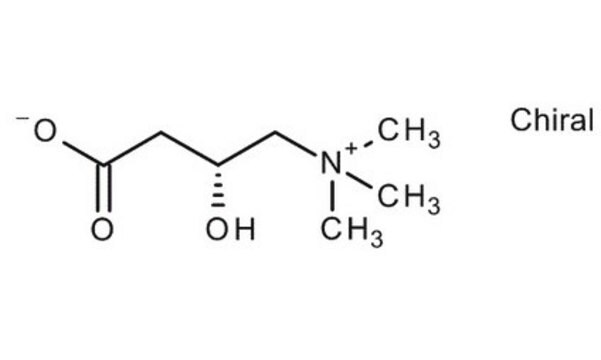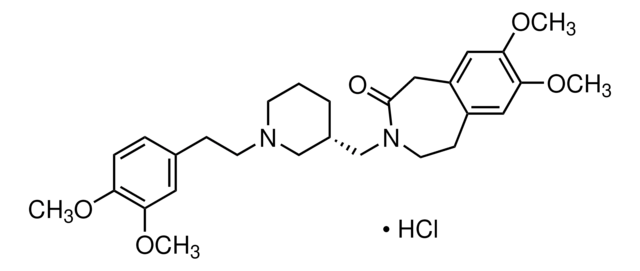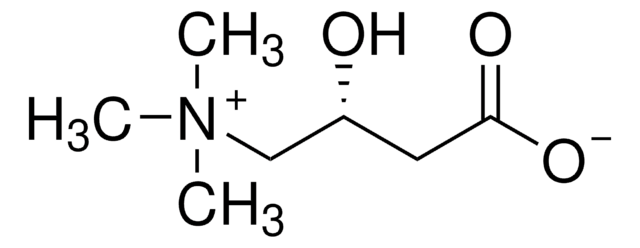Kluczowe dokumenty
Z0127
Zatebradine hydrochloride
≥98% (HPLC), powder
Synonim(y):
7,8-Dimethoxy-3-[3-[-N-[2-(3,4 dimethoxyphenyl)ethyl]-N-methylamino]propyl]-1,3,4,5-tetrahydro-2H-3-benzazepin-2-one hydrochloride, UL-FS49
About This Item
Polecane produkty
Poziom jakości
Próba
≥98% (HPLC)
Formularz
powder
warunki przechowywania
desiccated
kolor
white
rozpuszczalność
H2O: >10 mg/mL
inicjator
Boehringer Ingelheim
temp. przechowywania
2-8°C
ciąg SMILES
Cl[H].COc1ccc(CCN(C)CCCN2CCc3cc(OC)c(OC)cc3CC2=O)cc1OC
InChI
1S/C26H36N2O5.ClH/c1-27(13-9-19-7-8-22(30-2)23(15-19)31-3)11-6-12-28-14-10-20-16-24(32-4)25(33-5)17-21(20)18-26(28)29;/h7-8,15-17H,6,9-14,18H2,1-5H3;1H
Klucz InChI
ZRNKXJHEQKMWCH-UHFFFAOYSA-N
Zastosowanie
- jako blokerIf w celu zbadania jego wpływu na skupiska kardiomiocytów (CMC)
- jako inhibitor kanału aktywowanego hiperpolaryzacją i bramkowanego cyklicznymi nukleotydami (HCN) w celu zbadania jego wpływu na żywotność zwyrodniałych fotoreceptorów pręcikowych lub czopkowych u myszy
- jako środek bradykardialny do badania jego wpływu na tachykardię i podwyższoną temperaturę u ryb
Działania biochem./fizjol.
Cechy i korzyści
Kod klasy składowania
11 - Combustible Solids
Klasa zagrożenia wodnego (WGK)
WGK 3
Temperatura zapłonu (°F)
Not applicable
Temperatura zapłonu (°C)
Not applicable
Środki ochrony indywidualnej
Eyeshields, Gloves, type N95 (US)
Wybierz jedną z najnowszych wersji:
Certyfikaty analizy (CoA)
Nie widzisz odpowiedniej wersji?
Jeśli potrzebujesz konkretnej wersji, możesz wyszukać konkretny certyfikat według numeru partii lub serii.
Masz już ten produkt?
Dokumenty związane z niedawno zakupionymi produktami zostały zamieszczone w Bibliotece dokumentów.
Nasz zespół naukowców ma doświadczenie we wszystkich obszarach badań, w tym w naukach przyrodniczych, materiałoznawstwie, syntezie chemicznej, chromatografii, analityce i wielu innych dziedzinach.
Skontaktuj się z zespołem ds. pomocy technicznej








